A Brief Look...
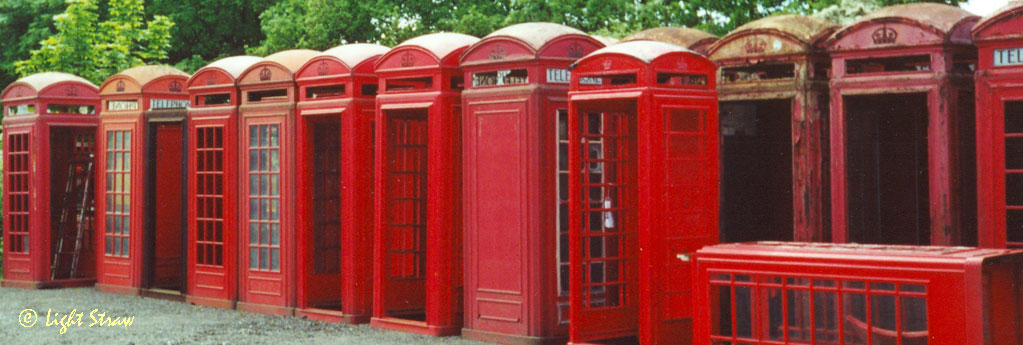 |
|
| EXIT to GPO Timeline | ATM | Street Talk 6 |
Telephone kiosks and payphones were once the only means to make a call, for those people who were not subscribers, or who were away from home. In the first decade of 2000, it is likely that mobile phones outnumber fixed lines, so that the need for public payphones is ever diminishing...Public telephones have a long history, outside the realms of these pages. Here, we will look briefly at just some of the designs through the decades. More will be added as time and research permits.
| The K1 | |
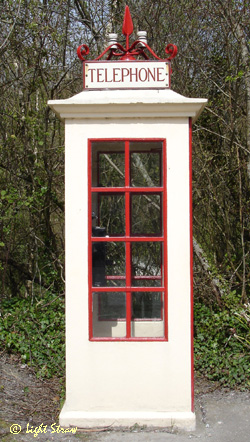 |
The G.P.O.'s first standardised telephone Kiosk No. 1 was designed in 1921. It was made of pre-fabricated concrete with metal glazing bars. |
| The K2 - A Classical Design | |
 |
Sir Giles Gilbert Scott (architect) designed the K2 for production in cast iron. |
| The K3 Concrete Kiosk | |
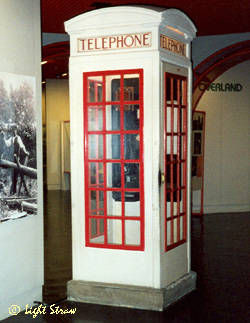 |
Scott's K3 went into production in 1929 and for a while it was the standard kiosk for sites outside of London. However, the concrete fabrications were both difficult to transport and did not weather well. |
|
The K4 'Vermillion Giant'. The K4 was developed (in 1925) from Scott's K2, by lengthening two sides to allow room for a post box and stamp vending machine. |
|
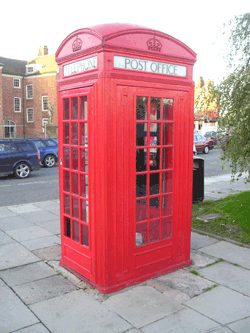 |
At one time, postage stamps could only be bought from a Post Office, so it seemed a logical idea to include both a stamp vending machine and post box on the outside of a telephone kiosk, hence the K4 'vermillion giant' was born. |
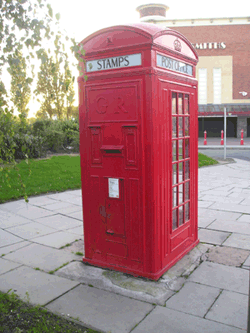 |
It is said that the stamp vending machine was noisy for those using the telephone and was a liability to maintain. |
| The K5 | |
The K5 used an improved concrete moulding of the K3 design which was more suitable for volume production. However, this was superseded by the K6 before manufacture began. |
|
|
The K6 'Mainstay of the GPO' The K6 (or Jubilee Kiosk), produced in 1936... |
|
 |
Scott's K6 was designed for mass production (in cast iron) with the aim of allowing one to be sited by every Post Office. At a height of 8 feet 3 inches it was also smaller than the K2. |
| The K7 by Neville Conder | |
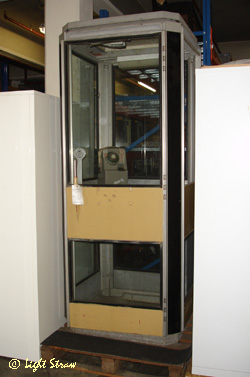 |
The K7 prototype kiosk was designed by Neville Conder CBE (architect) in 1958 and trialled in 1962. |
|
The K8 'for New Towns'. Bruce Martin's 1965 design for a striking new (cast iron) kiosk was produced in 1968. The K8 was a perfect match with the modern 'New Town' concepts of strikingly simple architectural designs. |
|
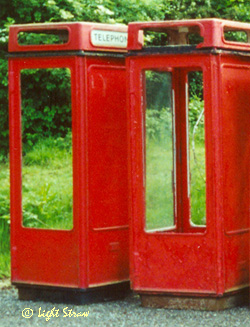 |
Kiosks which were produced before the K8 have been preserved and a majority can be found in London. In the 21st century it is surprising that the comparatively modern K8 has not been thought worthy of preservation. |
| The Light Straw K8 | |
 |
In the mid-1980s when yellow (telecom) vans were all the rage, some telephone kiosks in Manchester were painted Golden Yellow too! |
| The KX 100 | |
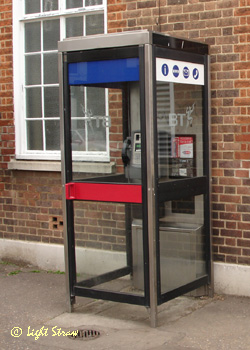 |
The KX series of kiosks were designed by DCA (David Carter Associates) in 1986. This modular range KX100-400) was fabricated from stainless steel and was initially finished in black and telecom yellow. British Telecom's identity was still blue and yellow at that time. |
| The KX + | |
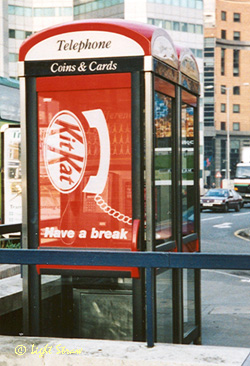 |
The KX + kiosk was also designed by DCA in 1994 and manufactured by GKN. The first KX+ was installed in London in August 1996. Conversion kits allowed existing KXs to be easily updated. |
| Street Talk 6 | |
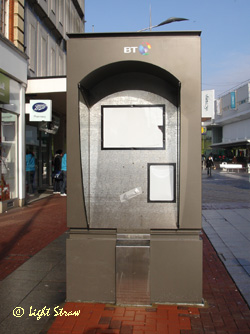 |
In June 2007 BT, in partnership with JC Decaux, launched the 'Street Talk 6' payphone. |
 |
... And six scrolling advertisements on the other. |
| ATM | |
 |
Third party revenue from conveniently sited (dual purpose) new style kiosks allows continuing use of a payphone which might otherwise be uneconomical. |
| Resources | |
 |
Chatto Curiosities of the British Street: |
The company specialises in designing for mass production.
www.dca-design.com/index/history.html
DCA first collaborated with the Post Office in 1968 for the 'Compact' telephone.
GKN
The company is a global engineering business.
www.gkn.com/
All logos and trade marks are the property of their respective owners and are used on the Light Straw site(s) for review only. Students and researchers are recommended to make their own independent enquiries as to the accuracy of the information contained therein.